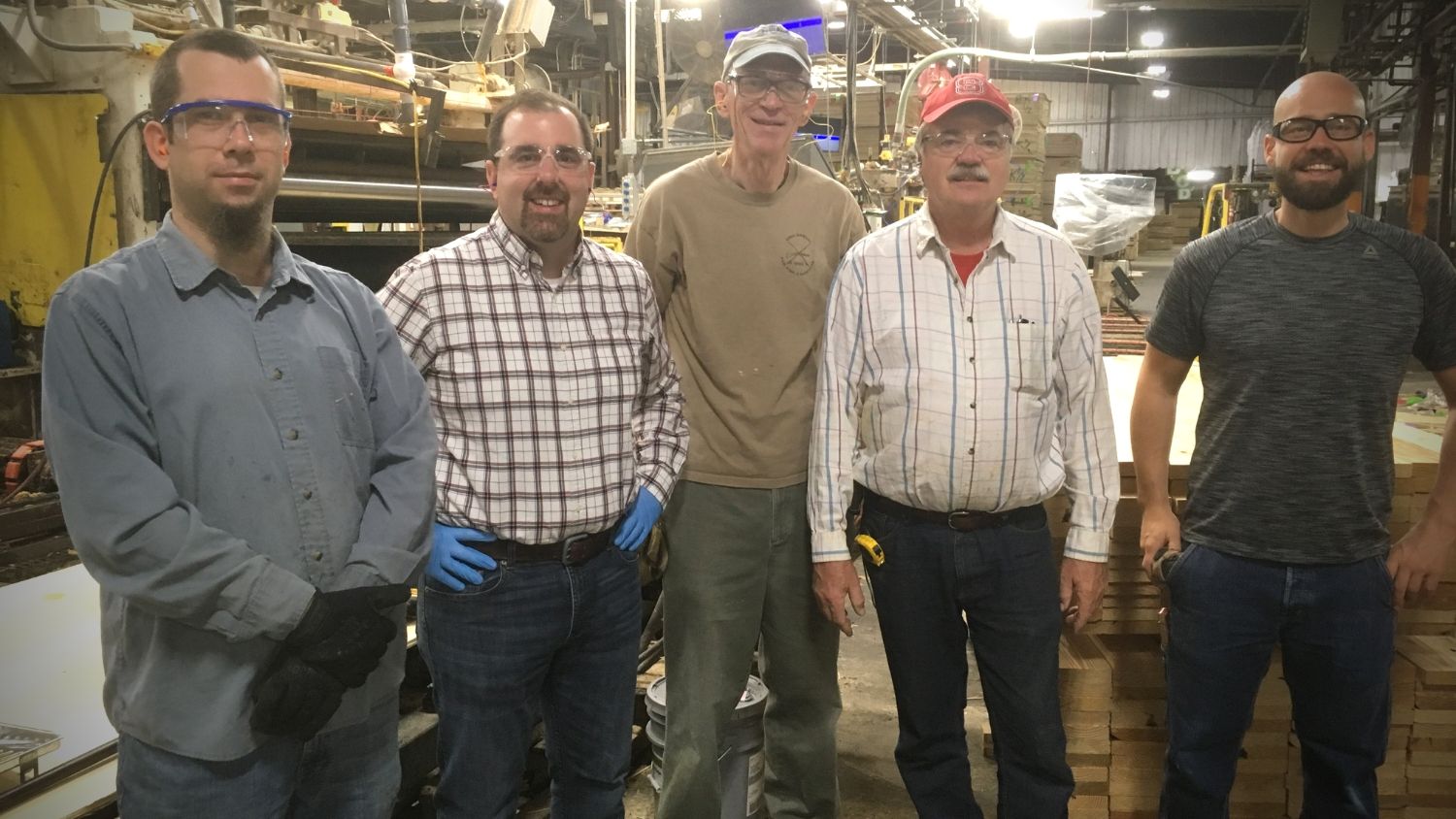CLT: The Future of Residential Timber Construction

This year, the Wood Products Cooperative Extension team embarked on a new project — a feasibility study — using Cross Laminated Timber (CLT) for residential construction. The project is funded by the United States Forest Service (USFS) and includes team leader Dr. Phil Mitchell and members Harry Watt, Dr. Frederik Laleicke, and PhD student Marcel Kropat.

Harry Watt describes the project’s goal “is to develop a new system of residential home construction using yellow pine lumber (abundant in supply in the SouthEast), making prefabricated panels of 4′ x 8′ to assemble right onsite.” On October 26th, the team traveled to Chatham, VA, achieving a successful trial run at Columbia Forest Products with their press.
Hodges Wood Products laboratory will be receiving a ‘new’ hydraulic press, to be re-purposed and refurbished from use in the furniture industry. With the hydraulic press no longer needed because of improved technologies and computerized machinery in the furniture industry, this is a fantastic opportunity! “The new hydraulic press will make 4′ x 8′ panels, 40″ inches high with the capacity for 10 at a time. The press is energy efficient, using only 10 horsepower and producing less waste than some engineered wood products on the market.” adds Watt.
The significance of this project is quite large, particularly for an institution in the Southeast. There are no other groups in the United States studying CLT on this scale specifically for residential use. According to European-based Storaenso’s Wood Products division, “North America’s demand for cross-laminated timber (CLT) was valued at $119 million in 2016, and this region will likely remain the second largest market in the world as consumers are expected to prefer wood-based construction over concrete in the future.” Further, the company states “trends that will drive the timber industry most include ecology, short construction times and flexibility. Challenges will include lobbying by the masonry and concrete construction industry and too many standards and regulations.”
Watt elaborates, “Timber products such as blockboard, plywood, and laminated veneer lumber (LVL) are still on the market, but the big innovation with cross laminated timber is in the sizes which CLT could be manufactured.” In the US so far, CLT has begun to take off in the high-rise building market especially with the coming 2021 International Building Code (IBC), allowing for wood structures (commercial buildings) up to 18 stories using mass timber or other noncombustible materials.

“In residential building, the benefits include a quicker build and easier logistics particularly for urban settings. For example, a 1500 sq. foot home might be construction in 3 days. Large trucks are not needed to transport the CLT framing,” says Watt. He continues, “on top of these benefits, CLT provides increased fire safety due to its charring properties. The panels are more economically beneficial at $5/square foot.”
The outlook for Cross Laminated Timber (CLT) in residential construction is promising. As British Architect, Andrew Waugh, puts it “Building in wood is super fast, super accurate, and also makes the most amazingly beautiful spaces.” Storaenso’s wood products division adds, “in terms of the worldwide building industry, wood is going to be bigger than just a moment – it is a trend that has great potential for the future of our cities, the future of housing, the future of how we will live and – last but not least – the future of the planet.”
Wood Products Cooperative Extension would like to thank the following partners for their efforts is helping this project continue: Timber Products, Culp Lumber, Jordan Lumber, Cameron, Franklin International, Henkel, and Columbia Forest Products.
- Categories: